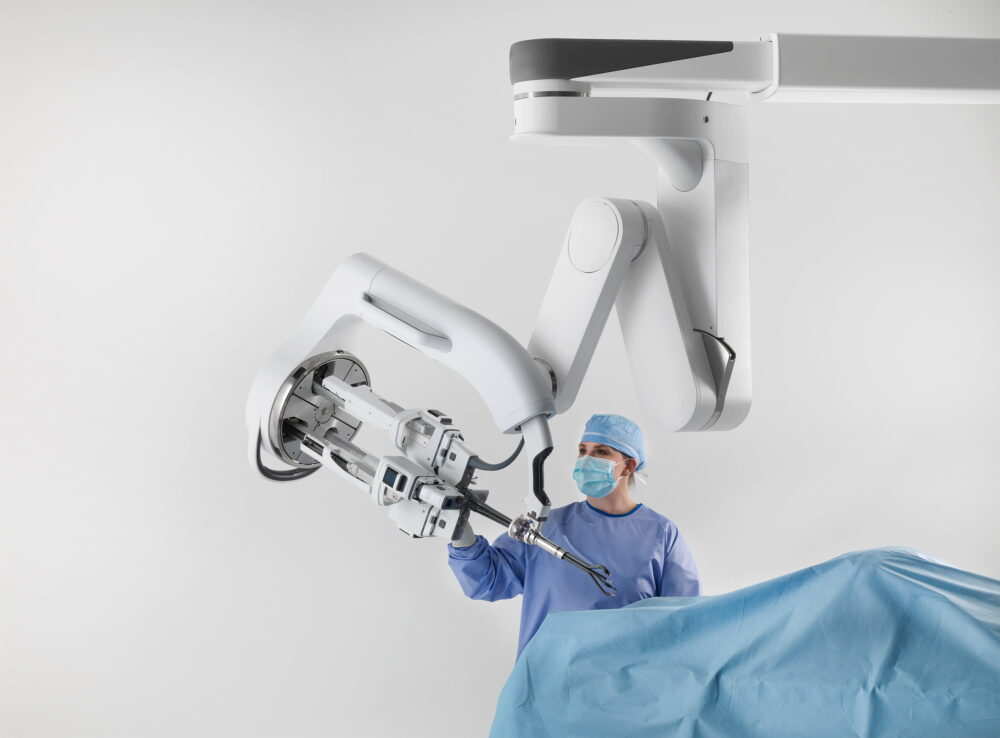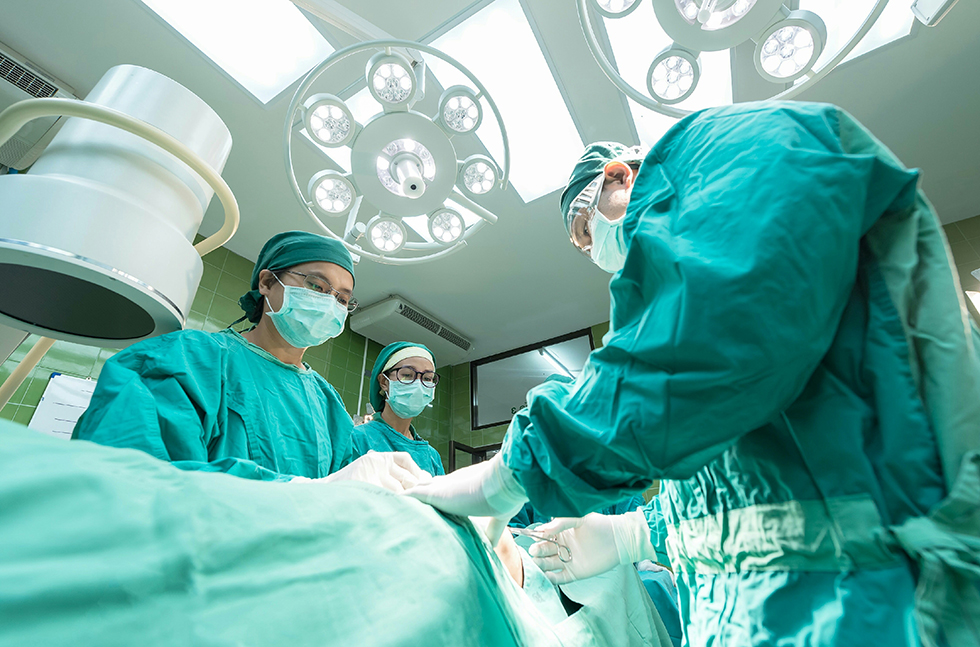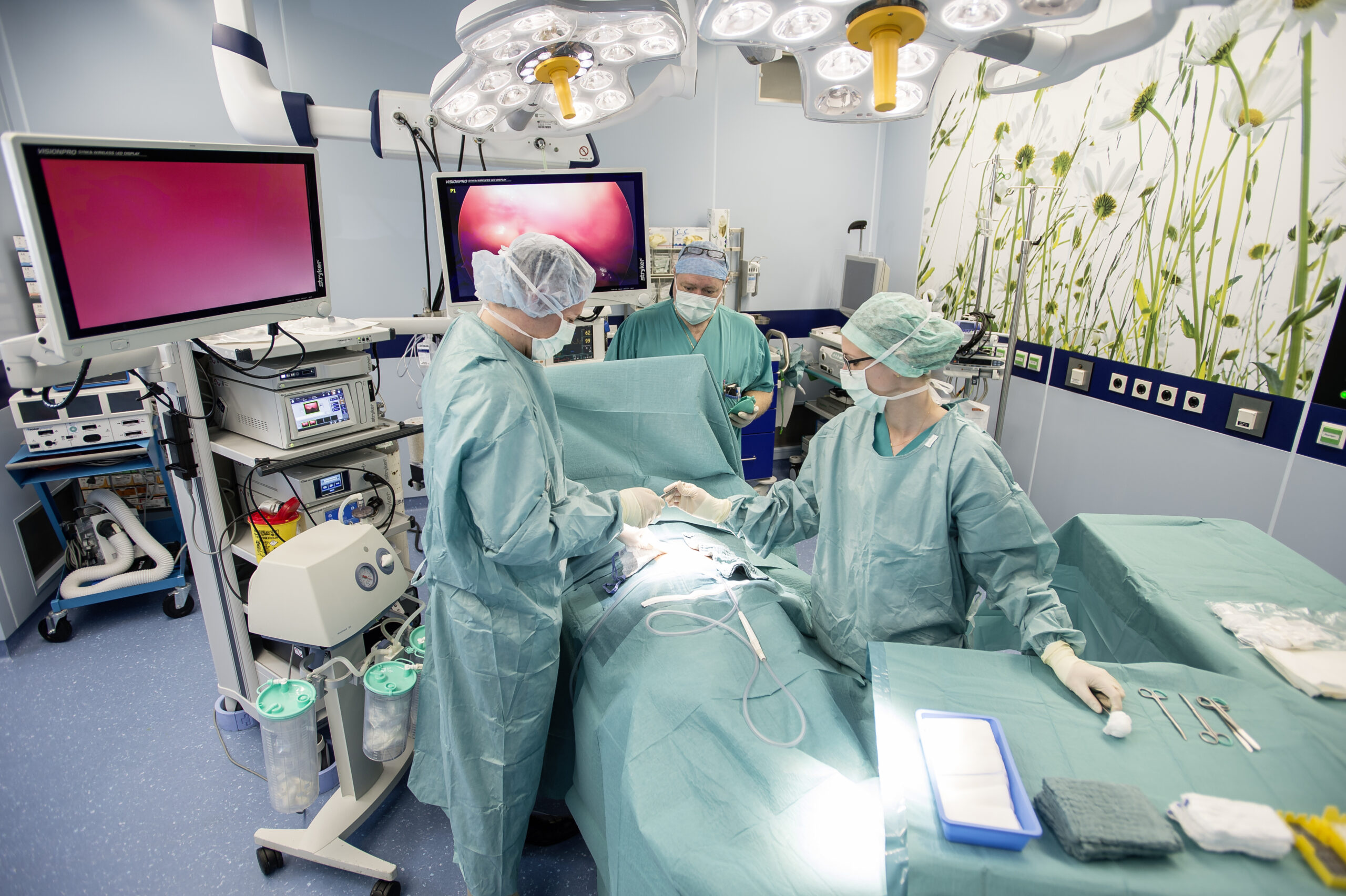
Robotic surgery can be seen as a significant advancement, along with technical upgrade, of laparoscopic surgery. This technique, this system, is minimally invasive and is supplemented with camera system and ergonomically controllable instruments with excellent mobility. Precision and protection of tissues are only some of the basic advantages of this surgical method. The principle of this technique is based on the fact that due to the increased precision and accuracy the affectedness of the tissue is reduced and therefore the regeneration and recovery of the patient is accelerated. At the same time, the patient’s blood loss during the procedure is reduced just as much.
It is also important to understand that the robot does not operate itself, it must be guided and controlled by the surgeon. Since the turn of the millennium, the robot-assisted surgical procedure “da Vinci” has been used. This system is being used more and more in Austria.
Robotic surgery was originally the result of a DARPA (Defense Advanced Research Projects Agency) initiative of the U.S. Department of Defense. The goal was to create a system capable of operating on patients remotely, even in regions that are not easily accessible. Initial approvals took place in Europe as the U.S. fell behind the EU with registration.
Application of robotic surgery
California-based technology company Intuitive Surgical brought the robotic systems to market. Across Austria, 2,100 such procedures are currently performed each year.
Radical prostatectomy (removal of the prostate for carcinoma) and partial removal of a kidney for carcinoma are the frontrunners among robot-assisted procedures. “But now the general surgeons are coming in with procedures on the rectum, esophagus, esophagus or pancreas. These are extremely complex operations. That’s just beginning,” explained Wolfgang Loidl, head of the urology department at Linz’s Ordensklinikum, which has been using the “da Vinci” system since 2008.
Advantages of robotic surgery: tremor-free operations
The Linz specialist explained that major advantages of “da Vinci” can be seen in certain operations in particular: “The advantages are not seen in the removal of tissue, but in the reconstruction afterwards. If you remove the prostate, for example, you have to sew on the bladder and the urethra. If you remove part of a kidney, you have to suture very finely.”
The function comes from laparoscopic devices maneuvered by the surgeon. This surgeon is seated at the so-called control station in a much better ergonomic position compared to working at the operating table!
But how exactly does this contribute to tremor-free surgery? Prof. Wolfgang Loidl explains in simple terms:
“It works completely tremor-free. The trembling of the hand is compensated. In normal laparoscopy, you operate on tools that are 60 centimeters long. You can imagine what happens when the surgeon’s hand trembles. We have real 3D vision. Via the camera (up to ten times magnification) we see the video in 4K quality. The ‘da Vinci’ laparoscopic tools have seven degrees of freedom for movement. The human hand has three to four degrees of freedom.”
Lower wound stress as a big advantage
The result of that tremor-free surgery is significantly less wound exposure but also less blood loss. Both aspects can also mean and lead to a faster recovery.
“After prostate removal, patients are urinary continent again sooner, and erectile function also returns sooner than with conventional surgery. After one year, however, there is no difference between the two surgical procedures,” the urologist emphasized.
The complexity of the system requires extensive training to use it correctly.
In fact, training is carried out on pigs, and experience is gained together with the instructor.
More than 40 procedures are needed to develop a routine. While in normal laparoscopies the learning curve starts high, but is learned slowly, here it is exactly the opposite: the learning curve starts very low, but is very steep.
Continuous advancement of robotic surgery
It is important to understand the constant, never-stopping development of the system, which costs around two million euros.
An example of that development is the camera, which used to weigh 3 kilograms, but now weighs only half a kilo. Or the laparoscopic tools, which have shrunk in diameter from 12 millimeters to 8 millimeters. In addition, other characteristics such as appearance, functionality, necessary service intervals, robustness, usability have developed and improved!
The greatest density of robot-assisted surgery systems in Austria is without doubt in Upper Austria:
Three in Linz, two more in Wels and Vöcklabruck. In Vienna, for example, another system is currently being installed at the Wiener Privatklinik. Loidl is available to the hospital with his expertise. A scientific symposium on the procedure is also being held there.
Robotic Surgery at the Wiener Privatklinik
Contact your Wiener Privatklinik today for more information on robotic surgery and beyond!
Our core medical specialties include traumatology, cardiovascular medicine, orthopedics and more!
We are dedicated to providing excellent care to our patients and optimal working conditions for our attending physicians and staff through first-class medical care, skilled
Doctors related to the topic

Univ.-Prof. Dr. Georg Schatzl
Urology, Robotic Surgery, WPK Central European Academy Cancer Center
View detail
Assoc. Prof. Priv.-Doz. Dr. Mir Alireza Hoda PhD
Surgery, Minimally Invasive Surgery, Robotic Surgery, Thoracic Surgery, WPK Central European Academy Cancer Center
View detail
Prim. Dr. Wolfgang Loidl
Urology, Robotic Surgery, WPK Central European Academy Cancer Center
View detail
Univ.-Prof.Dr. Sebastian Schoppmann FACS
Surgery, Oncological Surgery, WPK Central European Academy Cancer Center
View detail


